Label templates
The label template system allows flexible property assignment in annotations.
Members and plates have label template fields that the user can set for each object individually using the OPM, or automatically through the structural types system. These label templates can then be used in annotation styles to determine the content of the annotation.
This set of options allows you to have a different contents template for different objects within the same annotation style, which can be useful if the annotation should be structured differently for different structural types, such as columns and beams.
To demonstrate the capability, we have an example where we want to annotate the grid positions of the members on a General Arrangement view.
The columns would be labeled with the two closest grid lines automatically; X and Y.
The rafters would be labeled with just one closest grid line automatically; X or Y.
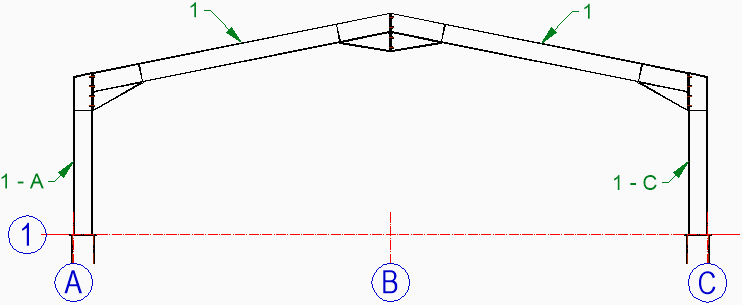
This is the end-result when the settings laid out below are applied to a simple example drawing
To make this example work, we have to make sure that the following settings are set correctly :
- In the Structural types, we can change the LabelTemplate1 property for columns to %ClosestGridX% - %ClosestGridY% :
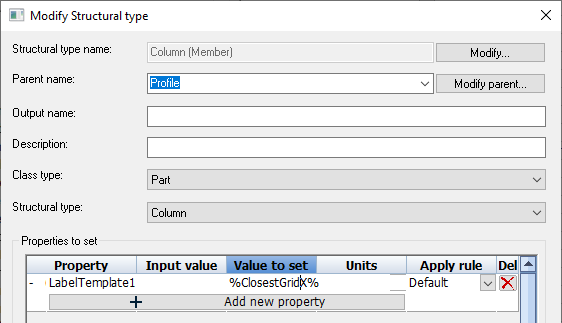
- In the Structural types, we can change the LabelTemplate1 property for rafters to %ClosestGrid% :
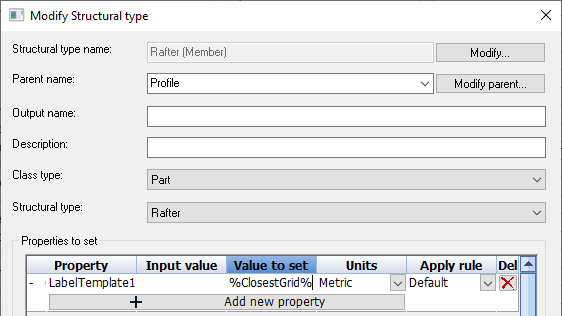
- Then after Reclassifying all parts in the drawing, these new label templates will be automatically set for all elements classified as columns and rafters in the drawing. The label templates are accessible in the Properties panel of profiles, plates, structures and volumes :
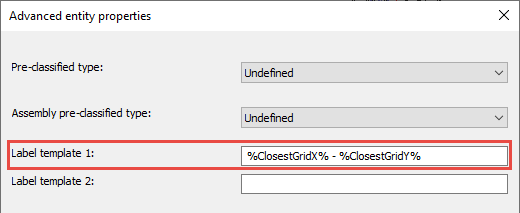
Note that it is not necessary to use the structural types to set these label templates. It is possible to use the advanced properties in the OPM to set the label manually. The current example is shown to demonstrate the automation advantage. - Then, we can use one of the annotation commands to draw an annotation that has the label template1 override enabled.
This override can be enabled in the Annotation style :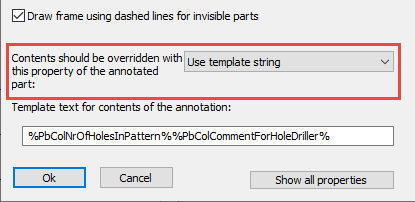
- We then use the Automatic annotations on View command to draw the grid annotations :

The annotation command will then label the parts accordingly : Rafters will get the name of the closest grid, and the columns will get the name of both grids on which they are positioned.
